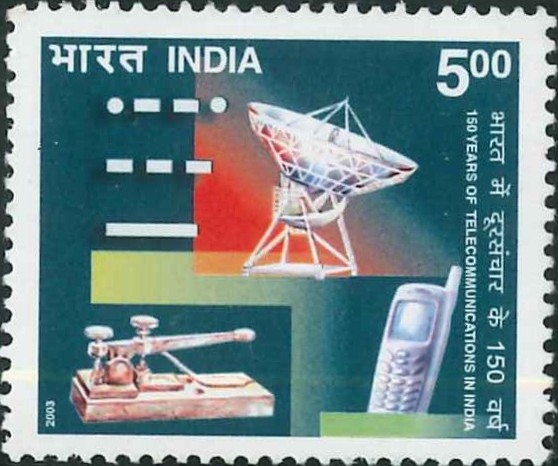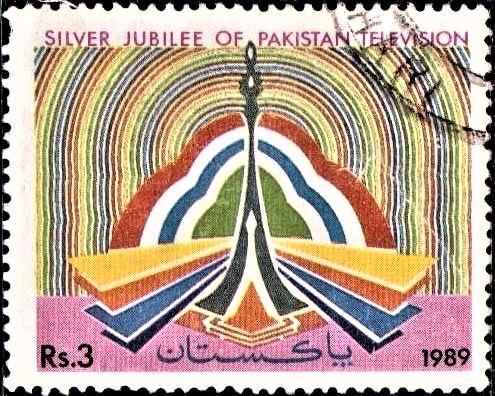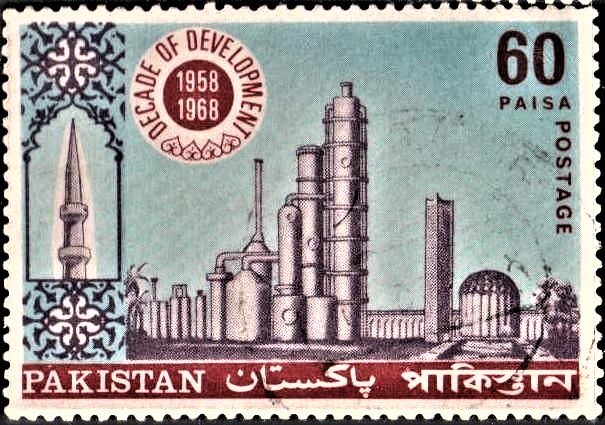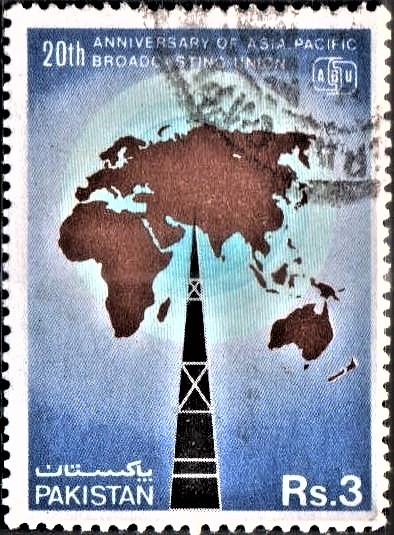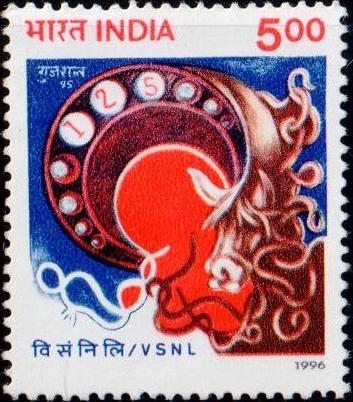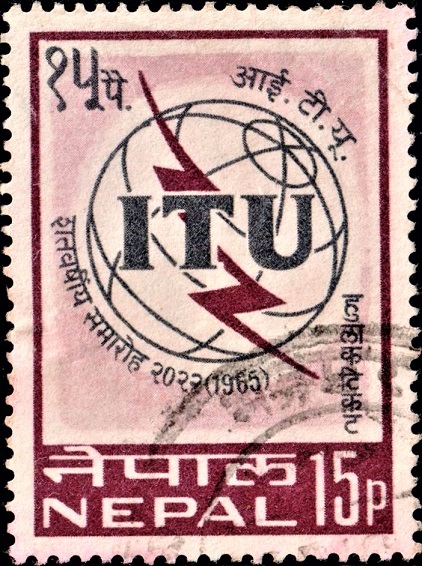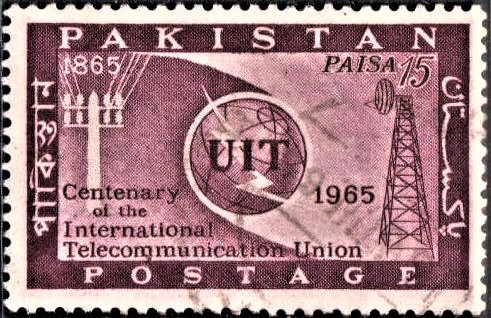
Pakistan on International Telecommunication Union
A commemorative postage stamp on the Centenary of the ITU :
 Issued by Pakistan
Issued by Pakistan
Issued on May 17, 1965
Design : The symbol of International Telecommunication Union is shown prominently in the design at the centre. On the right of the symbol a modern transmission tower with date “1965” is shown and on the left the old telegraph pole with date “1865”. The words “Centenary of the International Telecommunication Union” appear on the left hand corner underneath telegraph pole. The denomination “15-Paisa” appears on the top right corner in addition to the words “Postage” and “Pakistan” in Urdu, Bengali and English.
Type : Stamp, Postal Used
Denomination : 15 Paisa
Colour : Maroon
Size of Stamp : 26 x 41 mm
Size of Print : 23 x 38 mm
Perforation Gauge : 12½ x 14 (C)
Quantity Printed : 15,00,000
Number of stamps in each sheet : 100
Process of Printing : Intaglio
Printers : The Pakistan Security Printing Corporation Ltd., Karachi
About :
- The I.T.U. is celebrating its Centenary and on its request received through the U.P.U., a commemorative stamp is being issued on the 17th May, 1965. From the early dawn of civilization until a little over 100 years ago man did not get much further than the written message, the drum, the beacon and the smoke signal in his efforts to communicate at long distance. One of the last devices was an “Optical Telegraph” or “Semaphore” invented at the end of the 18th century. Signal towers with movable arms were set on hilltops a few kilometres apart. Message spelt out by different positions of the arms were read by telescope from one tower to another and passed on. The system worked quite fast on clear days but was useless at night or in fog. With the development of electricity in the first half of the 19th century, man’s capacity for practical achievement was suddenly enlarged a hundred-fold and a new vista for transmission of messages within a country and beyond its frontiers on international basis opened up.
- The International Telecommunication Union is the oldest of the inter-governmental organizations which have become specialized agencies in relation with the United Nations. It was born with the spread of one of the greatest inventions of the 19th century, the telegraph, which rapidly crossed national frontiers to link major cities in Europe. First came bilateral understanding between bordering countries, then international agreements between regional groups of countries, ending in an inter-European association. Non-European countries were progressively drawn in, and a truly international organization came into being. In 1865 the International Telecommunication Union was created in Paris by the First International Telegraph Convention. At Vienna, in 1868, a permanent international bureau was created and established in Berne.
- The international telephone service came much later. It was not until 1927, when radio provided the means to carry the human voice across the ocean from continent to continent, that this service became world-wide; nevertheless, in 1855, in Berlin, the first provisions concerning the International Telephone Service were drawn up.
- When, at the end of the 19th century, wireless (radio-telegraphy) became practicable, it was seen at once to be an invaluable complement of telegraphy by wire and cable, since radio alone could provide telecommunication between land and ships at sea. The first International Radiotelegraph Convention was signed in Berlin in 1906, by twenty-seven maritime States. The International Radiotelegraph Convention in Washington in 1927 was a landmark in the development of radio since it was at this Conference that the Table of Frequency Allocations was first devised.
- In 1932, two Plenipotentiary Conferences were held in Madrid; a Telegraph and Telephone Conference and a Radio-telegraph Conference. On that occasion the two existing Conventions were amalgamated in a single International Telecommunication Convention and the countries which signed and acceded to it formed the International Telecommunication Union, replacing the International Telegraph Union.
- A Plenipotentiary Conference held in Atlantic City in 1947 to revise the Madrid Convention and it introduced radical changes in the organization of the Union, new permanent organs of the Union were created, the I.T.U., became the specialized agency in relation with the United Nations in the sphere of telecommunication, and its headquarters were transferred from Berne to Geneva.
- Pakistan was elected as a member of the Administrative Council in Atlantic City Conference in 1947, and was re-elected in the Buenos Aires Conference in 1952. In 1959, a Pakistani national was elected as a member of the International Frequency Registration Board (a permanent organ of the I.T.U.). A representative of Pakistan is actively associated with the World Plan Committee, as its Vice-Chairman. By the very nature of its work, the I.T.U. has a very large membership – 112 member countries and four Associate Members. The I.T.U. joined the United Nations Expanded Programme of Technical Assistance in 1951, and there is a Department of Technical Co-operation in the General Secretariat. This Department administers a programme which sends telecommunication experts to various countries throughout the world to advise on the operation of telephone, telegraph and radio systems or to help train technicians of the future. In addition, there are many students studying telecommunications under this programme in countries other than their own.
- With the compliments of the Director-General, Pakistan Post Office, Karachi.


